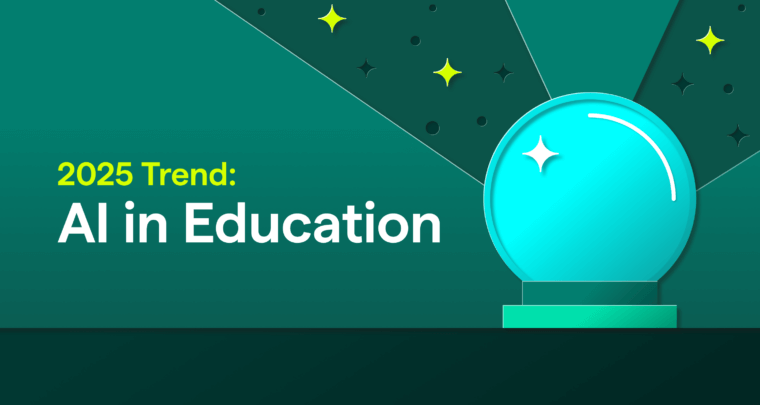
Generative AI presents equal parts challenge and opportunity for higher education. However, considering this unique moment for higher education institutions and the massive opportunity for new professionals entering the workforce, the pros of this paradigm-shifting technology outweigh the cons for educators and administrators able to capitalize on it.
On one hand, gen AI is completely disrupting the skill sets needed to succeed in the modern workplace, and this disruption is unique compared to the impact of previous technologies. Gen AI is affecting the entire workplace, down to nearly every role, threatening to displace professional competencies that have traditionally been insulated from radical technological evolutions. Today, professional expectations for graduates, across all fields and majors—not just technical ones—are in flux. This has set educators and administrators back on their heels as they try to quickly overhaul their curriculum and pedagogy to provide the AI competencies their students need to obtain and excel in their future jobs.
On the other hand, higher education has been in desperate need of a rebrand for some time. With enrollment rates in decline, growing skepticism around the return on investment of a college degree, and the rise of alternative work-readiness pathways, higher education could use a change in public perception—and gen AI may be the inciting incident institutions need. Gen AI calls for a tremendous reskilling across the world’s professional class—one that requires new technical competencies but also the strengthening of uniquely human soft skills that are complementary and resilient to the powerful automation of AI.
More than any other preparatory environment, higher education is best equipped to meet this call. How higher education uncovers and delivers world-class career readiness in the age of gen AI will determine whether it continues to be the premier experience leading to career success.
Positive tailwinds for higher education
Yes, the rising costs of a college education, paired with its uncertain payback period, have contributed to the steady decline of college enrollment over the past decade. And, yes, recent graduates’ perceived lack of work-ready skills has led to employers deprioritizing educational requirements for available jobs and seeking other pipelines of candidates to fill their talent gaps. However, for the first time in years, higher education sits at a moment of momentum. According to a National Student Clearinghouse Research Center report, “undergraduate enrollment grew 2.5% (+359,000) in spring 2024, marking the second consecutive semester of enrollment growth following years of decline during the pandemic.”
This uptick was driven by adults ages 21 and up, with a rise in college students over the age of 30. There is still a long way to go to get enrollment numbers up to pre-pandemic levels, but the uptick in the 21+ demographic does indicate that many adults who originally bypassed higher education now see it as their most viable path for better career opportunities.
In addition to a second semester of increasing enrollment rates, general interest in pursuing some form of higher education is increasing, according to the State of Higher Education 2024 report by Gallup and Lumina Foundation. The report states that “Americans still overwhelmingly agree that education beyond high school—particularly a four-year college degree—is valuable and important to having a good career.” It goes on to say that “adults’ interest in pursuing some form of higher education is at the highest level Lumina and Gallup have recorded.”
While there is still work to do to revitalize enrollment rates, higher education is enjoying positive tailwinds that it hasn’t experienced for some time. How far institutions can ride these tailwinds will depend on how well they deliver career opportunities to graduates and deliver career-ready graduates to employers.
Career success is still the number 1 reason to pursue higher education
According to the 2023 National Alumni Career Mobility Annual Report, “career success” is the number one motivator for obtaining a degree. Similarly, in the aforementioned Gallup and Lumina research, better career outcomes, including “earning a raise, promotion, or a more fulfilling role,” rank as the highest motivators for pursuing higher education.
Better career prospects influence not only if someone pursues higher education but also where they choose to get that education. More than cost, flexibility, and location, “opportunities for good-paying jobs in your chosen field of study” was given as the most important consideration when choosing where to get an education.
While the four-year degree is the most recognized form of higher education, students and employers are expanding their views on continued education. Gallup and Lumina segment higher education into four categories: industry certification, certificate, associate degree, and bachelor’s degree. While all four categories saw an increase in rates of interest, industry certification saw the biggest increase. What’s interesting is that while bachelor’s and graduate degrees were rated as the most valuable forms of higher education, there is currently a larger uptick in the rate of interest in pursuing certifications. This indicates that the cost, duration, and employer alignment of industry-designed programs are becoming more attractive than degrees that are more time-intensive and expensive.
There’s no mystery around why students pursue higher education in any form. If they are convinced a program will land them a career that affords a quality life and fulfilling work, they will pursue it. If not, they will pursue alternative, often more affordable, means to achieve those results, even if those opportunities have traditionally been perceived as less valuable.
Perception and complexion change of career readiness in the era of gen AI
While there are positive tailwinds for higher education, there are significant headwinds as well. Higher education must overcome two hurdles to solidify its essential role in students’ successful career and life journeys.
First, higher education needs to completely shift the perception of the ROI of the college experience. Second, it needs to secure its position as the premier environment to acquire the AI competencies necessary to succeed in the modern workplace.
Perception is hard to change. For years, higher ed has shouldered headlines like these:
- “Americans Are Losing Faith in the Value of College” —The New York Times
- “Students, Parents, and Voters Agree—Higher Ed Costs Too Much” —Inside Higher Ed
- “Gen Z Doesn’t Value Higher Education. Colleges Should Be in Freak-Out Mode” —Business Insider
According to a 2023 Gallup Poll of Americans, only 36% of respondents had “a great deal” or “quite a lot” of confidence in higher education. That continues a falling trendline from confidence levels of 48% in 2018 and of 57% in 2015.
Employers have a more positive perspective, though only slightly. According to the American Association of Colleges and Universities’ (AAC&U) Career-Ready Graduate report, 48% of employers strongly agreed that higher education is preparing graduates to succeed in the workforce; another 35% somewhat agreed. On the other hand, employers who are not convinced of higher education’s effectiveness believe it is getting worse, and some may even view it as a disqualifier if it’s the only experience a candidate has on their résumé. According to Intelligent, “Of business leaders who say recent grads are unprepared, 88% say this is more true now than of grads more than 3 years ago, and 94% admit they avoid hiring recent grads at times.”
Skepticism about graduates’ career readiness is being fueled by gen AI’s swift and uncertain disruption of the workplace. It is hard for business leaders to assess if graduates possess the skills needed to be successful when employers are still figuring out what those skills are. This leads to the second hurdle higher ed institutions need to overcome: preparing students for the AI-connected and consistently changing workplace.
According to McKinsey, “Generative AI could add the equivalent of $2.6 trillion to $4.4 trillion annually” to the global economy. Capturing this windfall is driving incredible urgency for business leaders across all sectors and, in turn, creating new opportunities for higher education. Employers are seeing significant AI literacy gaps across their workforce and are looking to recent graduates to bridge these gaps in their businesses.
This puts a premium on AI-literate graduates and those educational institutions that can quickly build a reputation for producing these workforce-ready professionals.
Today, the challenge for educators is in decoding what AI literacy actually looks like and developing learning experiences that instill these technical and durable skills into their students. There will be a steep learning curve. According to Cengage Group’s 2023 Graduate Employability Report, 52% of graduates say that the “growth of AI makes them question how prepared they are for the workforce.” And almost half (46%) of graduates fear their job will be replaced by AI.
While the challenge is great, herein lies the pivotal opportunity for higher education. The massive potential of gen AI will be realized only if it is accompanied by a great upskilling across the world’s current and future workforce. Higher education is best positioned to be the engine to not only produce AI-capable professionals but also imbue students with the understanding and experience to become ethically minded, critically thinking, empathic humans who can help shape the AI-augmented future for generations to come.






